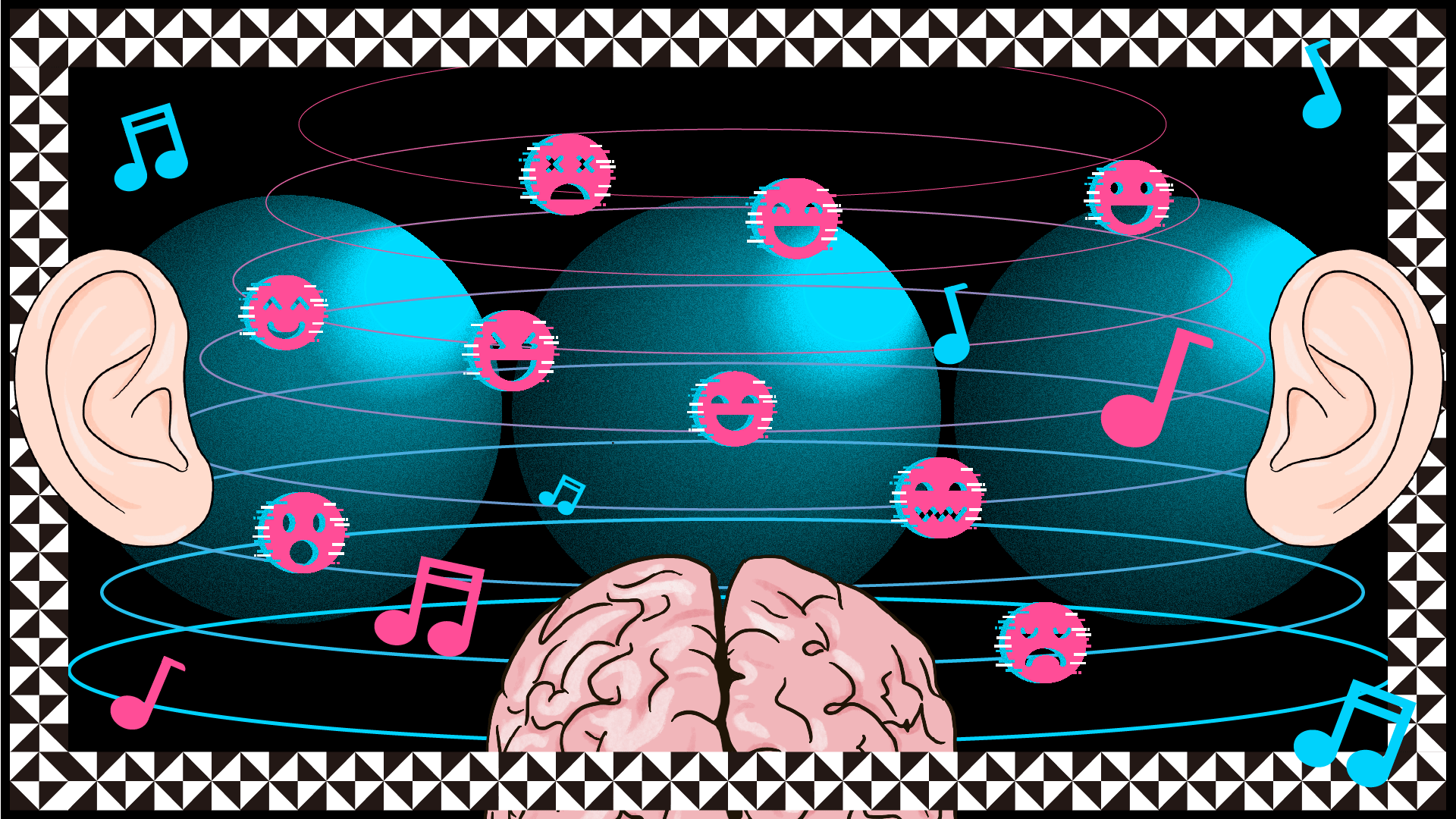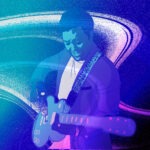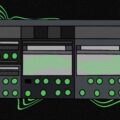Welcome to the next part of our series on the brain and music, where we will explore the origins of music and some of the cognitive processes that impact our musical perceptions. We’ll look at memory, emotions, language, and earworms. You’ll be surprised by how our brain’s vestigial processes impact our daily musical lives.
Darwin and music: the ultimate flirtation
Male birds dance and sing melodies to females to capture their attention and show off their physical form. It’s a flirting technique that’s been tried and tested in many other animal species during the mating season. In his book The Expression of the Emotions in Man and Animals (1872), Darwin linked this behaviour of courting with passionate melodies to sexual selection. Later, philosopher Herbert Spencer argued that music evolved from vocalizations of a wide range of emotional states, including joy, triumph, melancholy, loss, and rage, as well as sexual arousal. Music, dance, and art in general are unconsciously linked to intelligence, emotional sensitivity, and the ability to provide for family. The strong emotions generated by this subconscious seduction are well illustrated in performances by great artists; screaming, crying, and even the fainting of delirious fans.
Music before language?
When we compare music and language, they both have syntax, organization, and structure based on rules. Envelope, rhythm, melody, and tone are elements that unite them. On the other hand, their functions are not always the same; one serves to communicate and inform, while the other arouses the senses and provokes emotions. While more research needs to be done to fully understand the evolution of language and music, their similarities support the theory that these two cognitive skills developed separately, but also in parallel. Darwin and his followers have also proposed that music and language have their roots in the same proto-language.
Survival: a blend of emotion, movement, and rhythm
Composers know how to make us feel certain emotions. They create tension by changing tonality, timbre, contour, rhythm, or tempo. They achieve this by violating our expectations: a song without surprises becomes monotonous. Have you ever experienced the satisfaction of when you’re expecting a climax or a resolution in a song and it’s right on cue? Your brain loves it too!
Metrics are an important aspect of creating emotion: the brain can extract the tempo and listeners can anticipate the next beat. The cerebellum, or “little brain“, handles everything to do with movement and rhythmic pulsation. When we listen to music, it’s activated to follow the rhythm. It is also stimulated by music we like or know well. Connected to the amygdala, which manages emotional memories, the cerebellum also processes emotional information, as established by Jeremy Schmahmann and his peers.
So, rhythm, movement, and emotions seem to be linked by evolutionary foundations. Our ancestors needed to feel fear in front of a bear or disgust when eating spoiled food. Often, the most intense emotions make us react physically: fleeing, fighting, jumping, or removing our hand from heat. Emotion motivates action. It’s all about survival: we need to react quickly, without wasting time analyzing the situation. A direct link between emotion and action ensures a rapid reaction. Our ancestors passed on their genes, and today we have a direct neural link between emotions (the music we hear) and the motor system (the urge to dance, move, and take action).
Plus, of all our sensory systems, the auditory system reacts fastest to stimuli. Our brains possess vestiges of several secondary neural pathways associated with the cerebellum to enhance our ability to “react quickly – emotionally and with movement – to potentially dangerous sounds”, according to Daniel. J. Levitin, in his book This is your brain on music (2006). This allows the brain to preserve some hearing capacity even when there is direct damage to the auditory system, explaining why sound and music provoke so many physiological and emotional reactions, and why music is such a great morale booster.
Earworms: the brain plays its own music
Petr Janata‘s studies have shown that the neural pathways for perceiving and remembering an event are the same. Among other things, he measured the electrical activity of subjects’ brains as they listened to music and found that it was impossible to tell whether they were actually listening to the music or imagining it. “Remembering” something could be a search for the same neural pathways activated during perception. This mechanism could explain the phenomenon of earworms, when a piece of music gets stuck in our heads. This is because the neural circuit representing a song, or a part of it, remains in playback mode, playing non-stop. Earworms are rarely whole songs, but rather 15-30 second sections, like most videos, commercials, and jingles in the media today. And they’re the ones behind most earworms, since they’re based on repetition.
To create an earworm, you also need a certain level of weirdness and disorder. Just enough to make the unconscious want to understand and resolve what it’s perceiving. Victoria Williamsons and her colleagues discovered that when people listened to sections of familiar songs interspersed with silence in an MIR machine, their brains were still activated during the silences. Subjects reported continuing to hear the song during the silence. This phenomenon could be explained by the principle of continuation discussed in Part 1 of this series on the brain and music. The earworm might be due to the continuation of a musical section already heard, or simply to a piece we’re trying to imagine. As Oliver Sacks puts it so well in his book Musicophilia: “We speak of ‘hearing’ a tune in our heads, but this has nothing to do with the auditory system itself (…) Musical imagery, even in the total absence of external stimulus, can be almost as vivid as the actual perception of music.”
Let’s continue to stimulate our senses and make our brain light up, whether by listening to or imagining music: it’s much more than just a sound perceived by our auditory system, it’s a vivid energy that spreads through our brain and body.
Recommended reading:
Music and the Brain: Auditory Illusions
How to Create Emotion in Music: Terror
J. Levitin, D. This is your brain on music, 2006, Penguin Group
Sacks, O. Musicophilia: Tales of Music and the Brain, 2007, Borzoi Books
Written by: Caroline Boivin
Illustration by: Holly Li






















